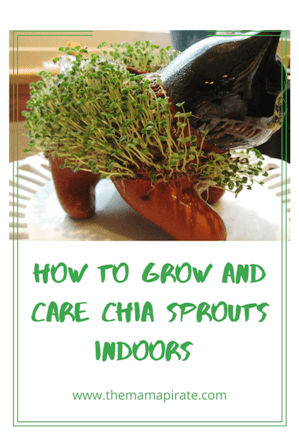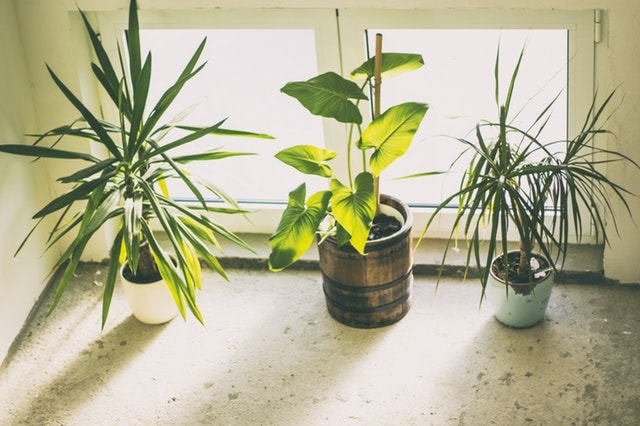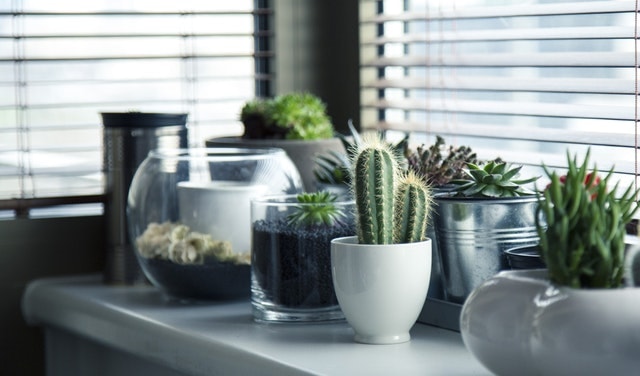Last Updated on 4 years ago by Namrata
Chia is beautiful to look at and easy to grow indoors. It deserves a corner in any garden indoors or outdoors and is one of the healthiest and easiest plants to grow. Have you ever imagined the actual reason behind the energy, stamina, and sturdy physicality of the Native Americans? Well, the secret is out, and it’s none other than Chia seeds that date back to 3500 BC. It was consumed as an endurance food in the diet of Aztecs and several other ancient tribes of both the American continents. In the Mayan language, the word “Chia” resembles strength.
Chia seeds are harvested from a flowering plant, scientifically named Salvia Hispanica, a typical member of the mint family. One tablespoon of chia sprouts helps a person to sustain and work hard enough for many hours. Chia seeds and sprouts offer an unbelievable range of health benefits, and knowing how to grow chia seeds indoors will prove handy some time or the other.
[toc]
Rich in proteins, essential fatty acids, oxidants, and numerous other nutrients, Chia sprouts were accepted as an alternative to an elixir of life. It contains five times more Calcium than what is present in cow milk. They consist of an abundance of chlorophyll, fiber, and Omega-3 Fatty Acids. Chia sprouts provide the much-needed Fatty Acids to maintain a healthy cardiovascular system of the body. Vegan or Vegetarian people also need to include Chia sprouts, where they will get the required amount of protein and fiber their diet lacks due to the absence of animal protein. The seeds are of great nutritional value and offer the following wide range of benefits.
- Being an abundant source of essential fatty acids like Linolenic and Linoleic acid (of Omega-3 Fatty Acid Group), it flexes and fluidizes the cell membranes.
- Develops immunity power to fight against Bacteria, Virus, and Allergies
- Removes harmful toxins from the body with the help of antioxidants
- The presence of green chlorophyll in the sprouts makes it a perfect blood cleanser.
- The enzymes present in Chia seeds facilitate our food digestion process.
- Calm nerves and soothe your mind.
- Used by diet-conscious people as it has excellent appetite suppressant qualities.
- You can also use the leaves of the Chia plant to prepare relaxing and therapeutic tea.
- These magic seeds give relief from a host of diseases like sore throat, arthritis, viral fever, pain, respiratory problem, and whatnot.
MORE POSTS: How to Grow and Care for Indoor Snake Plant

How to Grow Chia Sprouts in a Jar
Chia is an annual plant and its growth period is elongated as the seeds take time to ripe and are generally grown outdoors in US Department of Agriculture (USDA) hardiness zones, as far as an assessment of non-native plants is concerned. However, you can grow Chia sprouts with ease using a mason jar inside USDA hardiness zones. In this segment, let us check out the process of growing chia seeds inside a mason jar below.
- Purchase specific Seeds Meant Only for Sprouting.
Initially, the selection of chia seeds needs to be precise. When purchasing, always look for the seed specifically sold for sprouting. Seeds get treated to extend their shelf life for uses in culinary purposes. Try to avoid buying them as they are treated in a particular method and prevent them from sprouting. Also, try not to buy seeds full of fungicides and then sold for plantation or gardening purposes.
- Always Clean the Jar well before Harvesting.
Now that you have bought the chia seeds, you have to take care of the Mason jar. The jar should be as clean as it can be before starting to use for sprouting the seeds. Seeds do sprout in the dirt, and Chia is not an exception. Still, it is advisable to keep the jar clean. Otherwise, the contaminants in the container may result in illness on consuming the sprouts, raw or cooked!
We will strongly recommend a jar with a wide mouth as it facilitates the germination of seeds and the removal of sprouts for use. A cheesecloth supported with the ring will be the best option to cover the jar and not a lid. Sufficient air circulation inside the jar will provide a favorable atmosphere for the seeds to sprout and prevent any fungal growth.
- Clean, Soak the seeds and Dry Them.
Put a quarter (1/4) of a cup with chia seeds and rinse in cold water. Then apply a cheesecloth or a wire mesh to filter out broken seeds or unwanted chaff. Next, place the rinsed seeds inside the jar with lukewarm water occupying double the seed volume. Then let them soak for 12 to 24 hours.
After the soaking period is over, you need to drain off the water and rinse the seeds again. Remember, if you leave the seeds in water for any time after this, they may not sprout at all. It is suggested to daily rinse the seeds 2 to 4 times while completely draining the water after each wash. This technique will give enough water for the seeds to sprout without spoiling them.
- Place the Seeds in the Dark
Darkness suits sprouting. Thus when the Chia seeds are just about to sprout, you have to place the jar in a dark place. A dimly lighted corner in a cupboard or a kitchen slab not getting enough light is some of the ideal locations to keep the jar. Just after two days, you can see them sprout 1/8 to half-inch in length. Once sprouts reach the desired size, you can keep them at the light for a couple of hours to ‘green up.’ Although the greener sprouts have more nutritional value than those not grown at a light, remember that the greener ones are tough and bitter.
MORE POSTS: How to Increase Humidity for Indoor Plants without a Humidifier
How to Grow Chia Seeds on a Plate
The method of growing chia seeds on a plate requires you to sprinkle water instead of pouring water over the clay surface. You will not have to spray the water more often in this procedure. If you want to hold the moisture for an extensive period inside the tray, you can cover it with a glass or plastic cover. This process is widely popular due to the enhanced germination rate and proper maintenance of moisture. We have described the process in detail below.
- Place a nylon/linen material on a plate.
- Sprinkle some mist of water onto the cloth
- Put a chia seeds layer on the cloth uppermost part.
- Spray the seeds with clean and fresh water
- Cover it with another tray or a plate. Spray lightly once every day.
- You can harvest the chia sprouts within 2 to 3 days.
How to Grow Chia Seeds without Soil
Sprouting of chia seeds can be a little tricky due to the presence of mucilaginous properties.
Unglazed clay sprouter or terracotta sprouter is best suited for sprouting seeds like Chia. So let us see how exactly we can sprout the magic seeds without a pinch of soil. Below we have stated the instructions to grow chia sprouts through the dry sprouting method.
- At the bottom of a terracotta dish, place the layer of Chia seeds.
- Take a larger plate, fill it with water and then put the terracotta dish on the plate.
- Cover with another plate.
- The terracotta dish will soak up water from the plate below and provide the requisite quantity of water to sprout the Chia seeds.
- Lightly spray water on the seeds.
- You will get the chia sprouts ready for harvesting within 2 to 3 days.
How to Care for Chia Sprouts
The best blend of technique, interest, and significantly a little bit of care is all you need to harvest Chia sprouts! If you want to grow chia sprouts for use inside of your home, you can do it with ease. Since they require low maintenance and are hassle-free to grow, most people interested in gardening are growing them in their abode, especially the North American ones. Below we have shared some of the ways through which you can care for the chia sprouts.
- Light
Chia plants are tolerant to bright Sun rays. They can survive the hottest of the summer days at ease.
- Soil
These plants can adapt to a wide range of soil conditions. Their native place of origin includes sandy soil, but they will also grow in clay types with no difficulty. However, you have to ensure proper water drainage as wet conditions will not favor you while growing them indoors. If you are growing chia sprouts in pots, you can use any growing mix with sand for enhanced plant care. You can also put them in terracotta pots for improved absorption of moisture.
- Water
Chia sprouts are tolerant to droughts. In the nascent stage, if you regularly water the plants, Chia sprouts will grow rapidly. But after being established, they may require little or no water as they tend to adjust to all kinds of conditions.
Chia plants are also famous for re-emerging after a fire, indicating their hardiness and adaptability. Once established, Chia plants should self-sow each fall. They get liked by pollinators like other flowers of the Salvia family, but they can also self-pollinate.
How to Cook Chia Sprouts
Now the Chia sprouts are ready to harvest, and you cannot wait to include them in your diet! So here comes a list of dishes or recipes where you can add the magic sprouts. They are as follows.
- You can have them raw. Chia grown in organic matter retains all nutritional values for our body.
- You can add them to your ready-to-serve soup.
- Salads taste way better when Chia sprouts add their crunchiness to them.
- You may add them to your stir-fries or other vegetable dishes.
- You can also consume chia sprouts with bread spreads, sandwiches, dips, and appetizers.
- Apart from these dishes mentioned, you can also find a plethora of its recipes on YouTube and other culinary websites on the Internet.
MORE POSTS: How to Propagate Bear Paw Succulent from a Leaf

FAQs
Below we have mentioned some of the most frequently asked questions which might come to your mind while growing chia sprouts indoors.
What do Chia Sprouts Taste Like?
Chia sprouts are full of unique tanginess and provide variety and spice to various dishes like soups, salads, dips, appetizers, spreads, and sandwiches. Chlorophyll present in the chia seeds is an outstanding blood builder and blood cleanser. You can enhance and replenish the count of red blood cells by making soups.
How long do chia sprouts grow?
You can start harvesting the salvias indoors in spring or outdoors in the garden in late spring. You can germinate the seeds inside the house to keep them safe from the birds and other animals. Distribute them on top of the well-moistened paper or a damp tray for starting the harvesting process. You can cover the tray of the seed with plastic wrapping to keep them well moisturized. When the seed begins to germinate, carefully start to pick the seedlings and transfer them to the pots. When the Chia seeds get exposed to warmth, bright sunlight, and a requisite amount of moisture, they usually germinate in three days to two weeks. However, Chia plants produce flowers four months after germination.
How long do chia sprouts last?
Depending upon what time of the year and types of seed, chia sprouts become ready to harvest in 4 to 7 days when they reach a height of 0.5 to 0.75 inches. The user can cut the sprouts above the roots and implement them directly into the recipes. You can also uproot the entire thing and store it in a partially closed container or zip lock bags inside a refrigerator for as long as ten days.
What is the best time to harvest chia sprouts?
Depending upon what time of the year and types of seed, chia sprouts become ready to harvest in 4 to 7 days when they reach a height of 0.5 to 0.75 inches. The user can cut the sprouts above the roots and implement them directly into the recipes.
How much water do chia seeds need to grow?
Chia seeds need frequent watering to remain sturdy and lush. Each sprout can grow to a great height. Some might even cross the length of 1 to 2 inches. You do not have to keep the chia sprouts moist all the time, but you have to sprinkle water on them every alternate day. When the leaves of the sprouts start to droop a little, you have to water them.
Can you grow chia seeds from the grocery store?
Yes, you can grow chia sprouts from the seeds brought from the grocery store. But since they are already chemically treated, the sprout growing from them might not be as tasty as it should be from the natural chia seeds.
Bottom Line
At the end of this article, we can conclude that growing a chia sprout indoors is possible. Growing it inside your home is unbelievably simple. You do not have to implement any special device or equipment. Also, you do not require many gardening skills for harvesting chia sprouts. Chia sprouts play a crucial role in making the world a healthier place and eventually make a journey from the classes to the masses. When the entire world is trying to fight out the ongoing pandemic and find a healthy solution to life, it is high time to embrace the benefits of Chia sprouts and lead a healthy life!
MORE POSTS:



